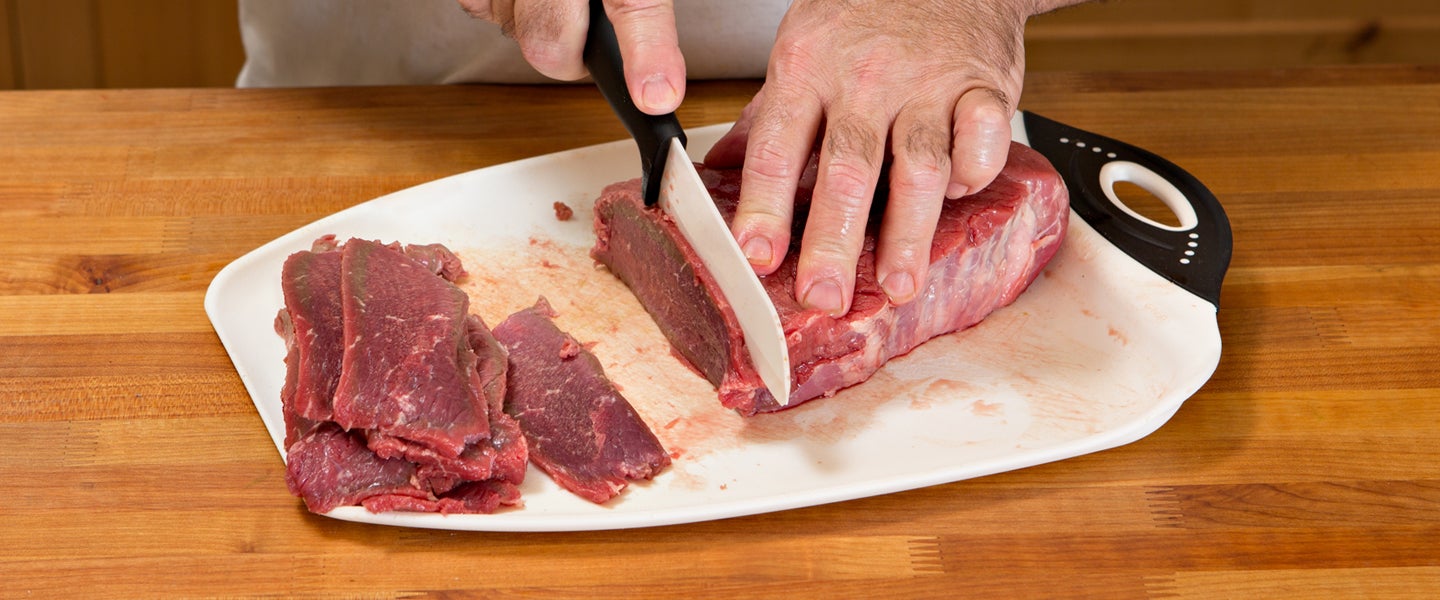You might be thinking, “Hey, I’m not living in one of those historic colonial towns where everyone pretends it’s 1790 for educational purposes, so why the fuck do I still use a cutting board made of wood?”
I mean, it is 2020. We have made material advancements.
But you know what? Those were all mistakes, and the cutting board is proof. Even with all the plastic choices on the market, wood is still your best bet.
That said, there’s some room for improvement.
Plastic might seem like a more sanitary choice. It doesn’t rot, and it’s less porous than wood. Yet there’s actually no conclusive evidence that plastic cutting boards are any cleaner than wooden ones when treated similarly. Per a bibliographic analysis of 12 different studies published in Food Microbiology on the topic, no study has adequately proven that plastic is any better than wood.
Bacteria can penetrate wood more deeply than plastic, but surprisingly, wood withstands pressure from knives better than plastic. When using a plastic cutting board, you’re making micro-cuts onto the surface where bacteria can thrive. According to studies conducted in the 1980s by the “godfather of cutting board food safety” Dean Cliver at the University of California, Davis, wood is less permeable to deep cuts. So while it may be more challenging to sanitize a wood cutting board, its sturdiness compared to plastic makes it a wash.
In terms of utility, plastic and wood are about equal, so long as the plastic is a soft polypropylene. Hard plastic cutting boards, or ones made of glass, ceramic, stone, what have you, will quickly dull your knife. One benefit of plastic is that it’s cheaper, meaning you can more easily have separate cutting boards for produce and meats — if you’re at all concerned about sanitation, you shouldn’t be using the same cutting board for raw chicken as you do cutting up apple slices unless you’re super diligent about cleaning them (that is, soaking them in a bleach solution after every use).
The downside of plastic, though, is that it’s incredibly fucking ugly and I hate it. It might even be depositing microplastic into your foods. Some decent wood cutting boards aren’t even a hefty investment: Williams Sonoma sells a set of two acacia boards for $30, while Target offers a similar set for $20.
A better compromise between hardwood and plastic, though, is bamboo. In fact, the Department of Agriculture recommends bamboo above all else, as it’s both less porous than hardwood and sturdier than plastic. Plus, it can be adequately cleaned with soap and water. Bamboo is cheap, too: Target sells a set of three for $18. Most importantly, it’s not horrific looking.
Cutting boards are a prime example of “if it ain’t broke, don’t fix it.” Plastic might be literally a few dollars cheaper, but it’s not going to last nearly as long. Somehow, though, its carcass will exist for thousands of years in a landfill. Meanwhile, wood will die an honorable death and decompose within a few years. So, you really have no good excuse.

